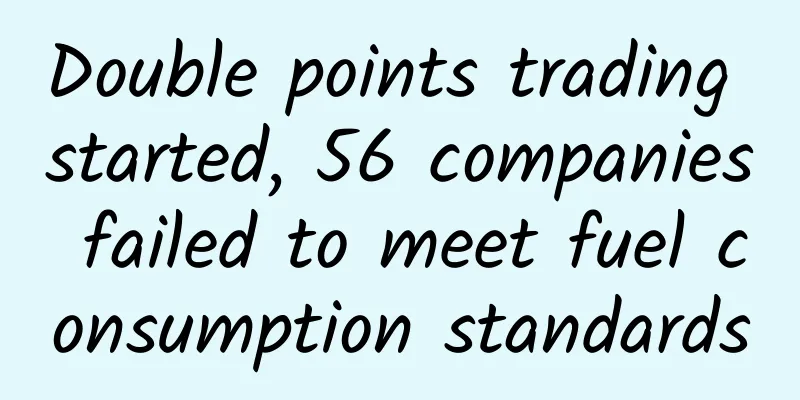Dr. Mo explains the Apple-Google smartphone war: Both giants face challenges

|
The American technology blog Re/code wrote an article yesterday that detailed the nature of the smartphone war between Google and Apple, as well as the characteristics of each. The following is the full text of the article: Smartphones are the most important digital devices today, but when people think of them, they naturally think of a market share war. Conventional wisdom holds that Google's Android platform has beaten Apple's iOS. So, the game is over. However, this mindset oversimplifies and ignores many of the underlying details. The game is not over. In fact, the two giants are playing different games, and this is by no means an exclusive competition between one or the other. Both companies have achieved great success, but they have adopted different standards and used different techniques. Both giants face daunting challenges, but they are different. Google Android dominates market share First, market share. Globally, smartphones powered by Google's Android operating system clearly dominate, with a market share of between 80% and 85%. However, these shares are shared by many companies. As the only mobile phone equipped with iOS operating system, Apple iPhone has a global share of between 10% and 15%. Android's share has exploded in recent years, while Apple's share has gradually declined from its peak after the iPhone was released in 2007. Android was only launched the following year, and it took several years of development to finally establish its dominant position. This is undoubtedly a great achievement for Google, and a real and potential problem for Apple. But the reality is not that simple. But Apple still performs well For example, iPhone sales appear to be shrinking, but that's not the case. In the most recent quarter ended September 30, Apple sold nearly 40 million iPhones, exceeding most analysts' forecasts and setting a September quarter sales record, far higher than the 34 million units sold in the same period last year. Moreover, this data only reflects the sales of the new iPhone 6 in the first few weeks of its launch, and in a relatively small number of countries. We won’t know the true sales of these new phones in the short term, but early data and queues in physical stores show strong sales. Apple CEO Tim Cook said in late October that the two new iPhones “have become the fastest-selling iPhones ever.” Different games Second, it's important to understand that Apple and Google don't compete directly in the smartphone market. Despite briefly owning Motorola, Google doesn't make phones. The company licenses Android to manufacturers for free, and it not only supports Android, but it also develops apps for iOS. The company makes money from Android and apps in the same way it does from search, by first collecting user data and then using that data to sell ads. In contrast, Apple's iOS operating system is only a part of its hardware products. It is neither sold nor licensed to other manufacturers. Apple's self-developed applications are not supported on other mobile platforms. Unlike Google, Apple makes money directly by selling mobile phones, and its mobile phones are a collection of hardware, software and cloud services. It is precisely because of the difference in business model that Google has developed better maps than Apple. It is also because of the difference in business model that Apple's payment system has won the trust of banks and merchants because it does not collect data. Apple's real rivals are Android phone manufacturers, the most typical of which is Samsung - which is also the only Android phone manufacturer that has continued to achieve significant success worldwide. Obviously, without Google and Android, Samsung and other Android phone manufacturers are no match for Apple. So Android's dominant share is by no means irrelevant. However, it is not as decisive as it seems, because the entire Android camp is highly fragmented, with many different hardware manufacturers and even different styles of platforms. Many hardware manufacturers are not even considered by Apple as real competitors. In addition, Apple only focuses on the high-end smartphone market, so it has no intersection with many low-end and low-priced Android phones. Some people believe that this will eventually lead to the decline of Apple. But now it seems that Apple has grabbed a disproportionate amount of profits in the global smartphone market with this strategy. So far, both Google and Apple appear to be thriving with their respective models. Google has vast channels, including low-cost phones sold in low-income countries, to support its data collection and advertising businesses. Apple can attract high-end, status-conscious users, not only in developed countries like the United States and Japan, but also in the rising middle and upper classes in less developed countries. But both companies and their platforms face potential threats. The real threat from Apple The main threat to Apple is that even if it settles for a lower market share, it could still reach a point where it is low enough that developers won’t want to create new apps for iOS. Apple may be the BMW of the tech market—low share, but high prestige and profits—but the BMW doesn’t rely on third-party support. This could be a repeat of what happened to the Macintosh in the 1990s, when the computer's low market share led app developers to stop designing apps for the Mac and focus all their efforts on the Windows platform. That has not happened yet. App developers are still releasing iOS apps, often before Android ones, thanks in part to Apple’s less fragmented and easier platform to develop for, and in part to Apple users being more willing to spend on app purchases and in-app purchases. In my conversations with Apple executives, they insisted that market share is not and will not be their goal. They even said that most market share data is inaccurate, but they declined to specify the exact degree of error. One potential solution for Apple could be to launch a mid-range iPhone—not a cheap, shabby version, but a beautifully designed, feature-rich version with some features removed—to avoid damaging its brand image. People may be tired of spending $650 on a high-end bare-bones phone, and Apple has apparently not announced a "Plan B"—other than selling older models at lower prices. Motorola has had some success with its mid-range strategy, and Xiaomi, a fast-rising company, sells beautiful phones at low prices. However, iPhone product manager Greg Joswiak recently denied this model at the Code/Mobile conference. He said: "We all talk about some of the mistakes Apple made in the 1990s, some of which were trying to chase market share with cheap products and gave up a good user experience. You may make a mistake once in your life, but you can't make the same mistake twice... It may be naive to say this, but we believe that if you can make better products and provide a better experience, there will definitely be a healthy market. A healthy market does not mean you have to be a share leader." Google's key threat The threats facing Google are multi-layered. First, Samsung, the largest Android hardware manufacturer, faces a severe threat. The high-end market is facing suppression from Apple, and the low-end market is also facing fierce competition from a number of low-priced Asian mobile phone manufacturers. This is very important because other Android manufacturers are either not profitable, not going international, or have too low market share. According to estimates by Strategy Analytics, a US market research company, Samsung's global smartphone market share in the third quarter has dropped sharply from 35% a year ago to 24.7%. The company's profits in 2014 may decline and even hit a three-year low. The company has announced that it will reduce the number of smartphone models and fired some mobile phone executives. Second, and most importantly, more and more Android phones are using the free, open-source version of Android, which lacks Google's suite of apps, making it difficult for Google to earn revenue from it. Some estimates put the market share of so-called "Android open phones" at 20%. Google is fighting back with a program called Android One that the company says will help smartphone makers build $100 phones for emerging markets that come pre-installed with its suite of Google apps, but it’s hard to tell how successful the program will be. Ultimately, this competition is not simply a battle for market share, and both major smartphone platforms are facing challenges. |
<<: Cocos Developer Salon——Cocos Studio V2.1 Open Plan
>>: Tim Cook and Jack Ma are among the candidates for Time's Person of the Year 2014
Recommend
"Crossing the river by feeling one's way across", he is the first person in China to study and protect fireflies
The scene of chasing fireflies on summer nights i...
Ten reasons why How-Old became popular
The How-Old website developed by Microsoft has re...
Is pomegranate rich in nutrients and can it beautify and fight cancer? Nutrition experts: It is really not recommended for this type of people to eat too much
gossip There are so many seasonal fruits in autum...
Why do we feel more energetic the more we stay up late?
Reviewer of this article: Chen Haixu, Deputy Dire...
106 people in a kindergarten in South Korea suffered from food poisoning! What exactly happened? Attached details
Recently, 106 people in a kindergarten in South K...
Microsoft Office 2016 creates mobile office solutions for large and medium-sized enterprises!
Over the past few decades, Microsoft's Window...
The outlook for Android is not optimistic. The deployment rate of the new version has dropped by 20%.
According to foreign media reports, compared with...
Dr. Qingma's "Tsinghua Mom Parent Class Three-in-One Parent Class"
Resource introduction of Dr. Qingma's "T...
What effect does sound have on photosynthesis in plant leaves?
As animals, it is not only us humans who are sens...
Kill DingTalk? Is this a sad story?
Recently, an article titled "Ma Huateng thre...
Southwest Associated University: When the Stars Shine
Southwest Associated University: When the Stars S...
3 tips for refined operation strategies!
As the cost of acquiring traffic gradually increa...
As spring arrives and flowers bloom, beware of animal injuries that may cause anaphylactic shock
Spring is here, Various insects also began to bec...
A must-have for operations, promotion and marketing: a complete list of the latest hot topics in July 2017!
Nowadays, chasing hot topics has become one of th...
From China to the United States: Talking about mobile phone screen protectors
Since humans began to use mobile phones, there has...









